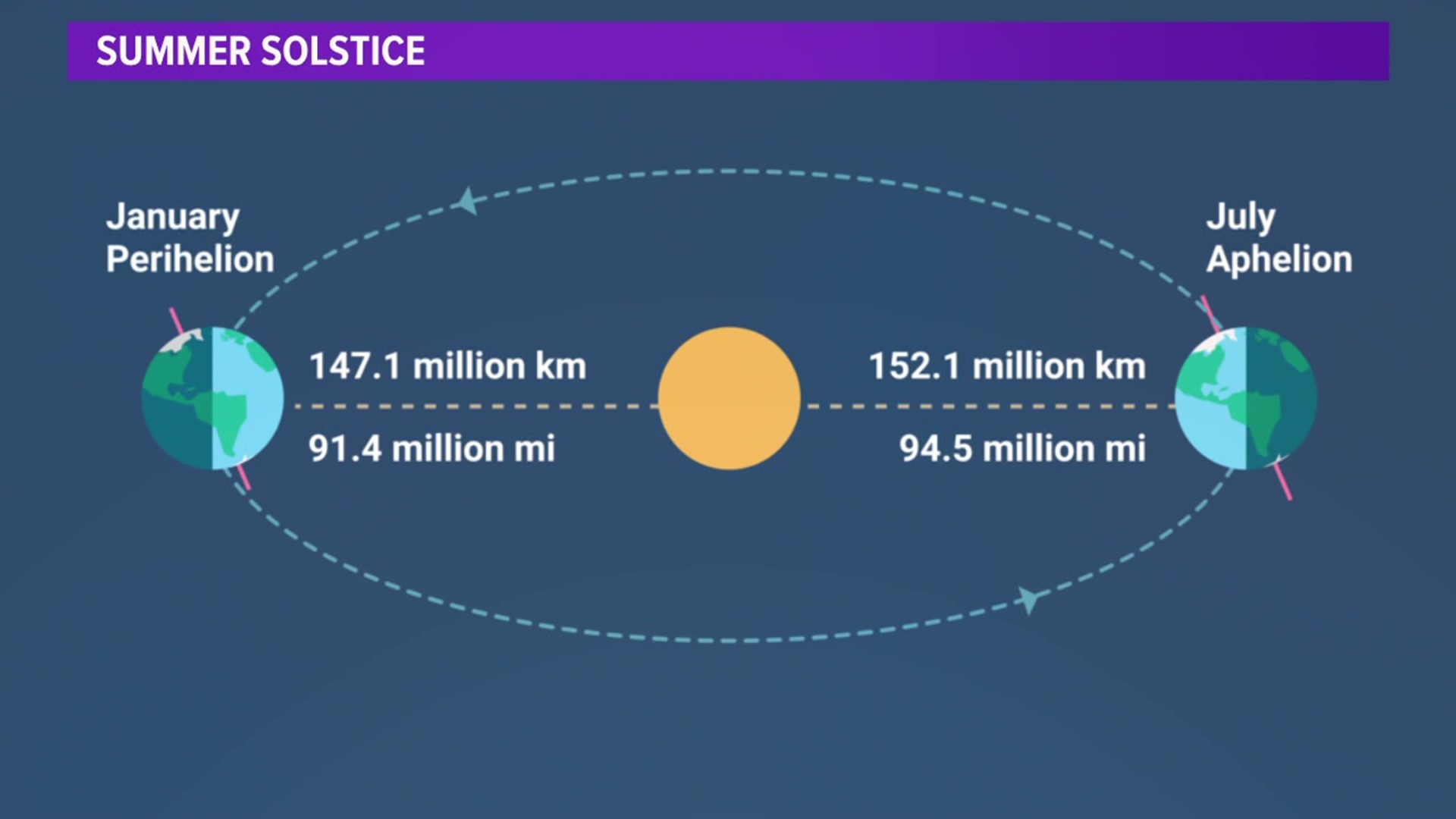Welcome to summer, my friends. Summer officially arrived at 11:31 Sunday night.
The dog days of summer are almost here. Those dog days of summer also mean shorter summer nights which actually isn't great for stargazing.
But great because of those warmer temperatures because the Earth is closer to the sun in the summer? Not so fast, my friends.
What happens in the summer is the Earth is tilted towards the sun.
We're further away from the sun in the summer than we are in the winter by about three million miles.
Imagine if we were tilted towards the sun and we were closer.
That surely would be that summer temperatures would be hotter.
Winter temperatures with us being tilted away and further away, well, we'd be even cooler than we are now.
Here's what else the summer solstice means for you.
The sun goes directly above the Tropic of Cancer, where they have 13.5 hours of daylight.
Of course, the Arctic Circle in the Northern Hemisphere gets 24 hours of daylight, and the Arctic Circle in the Southern Hemisphere is in total darkness.
The Summer Solstice is also the point when the sun reaches the highest point in the sky off of the horizon.
So this is it, baby.
The sun is at the highest point in the sky this time of year.
The sun sets at 8:40 p.m. for the remainder of the month.
So, enjoy these warm summer nights.

